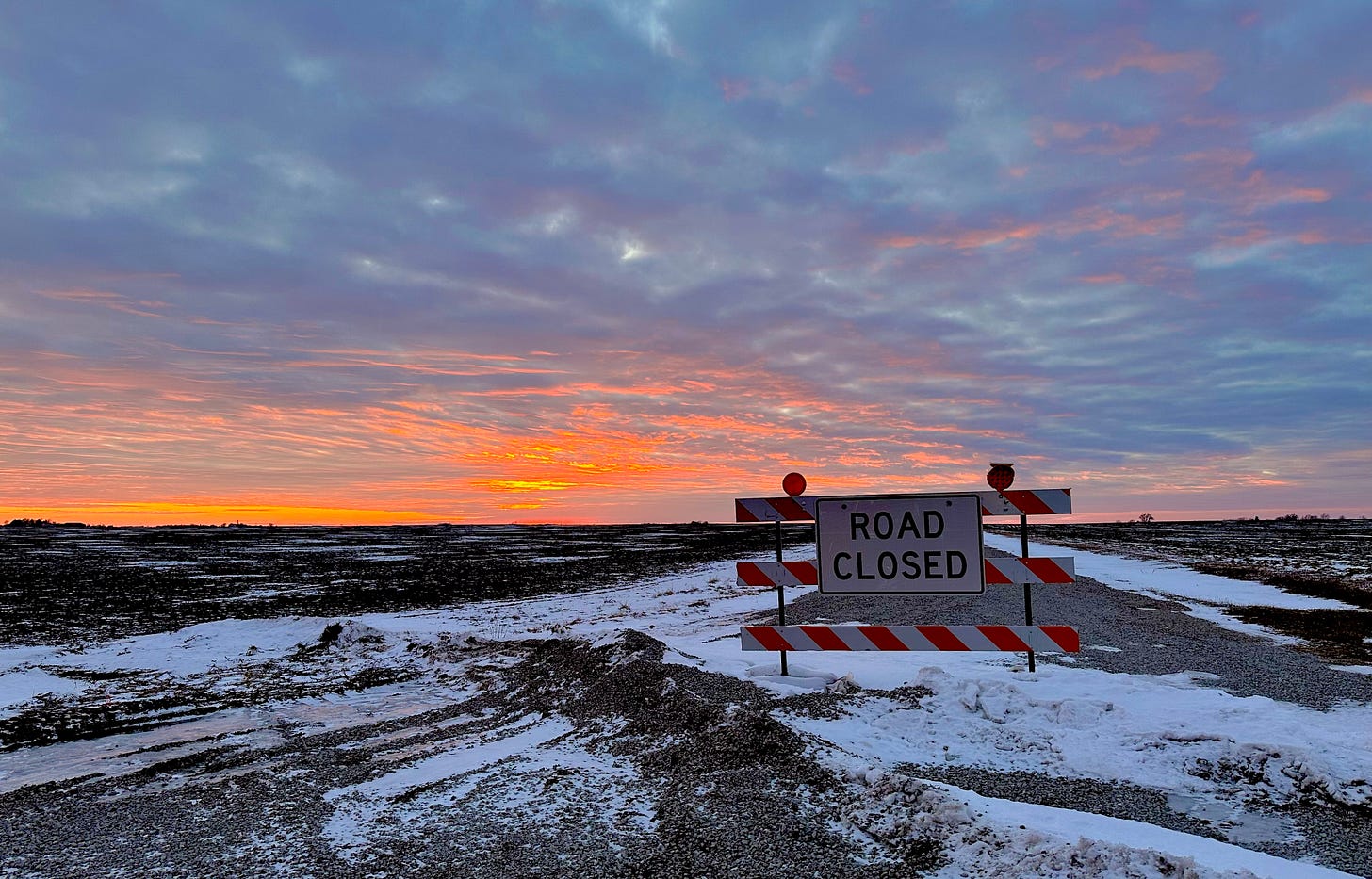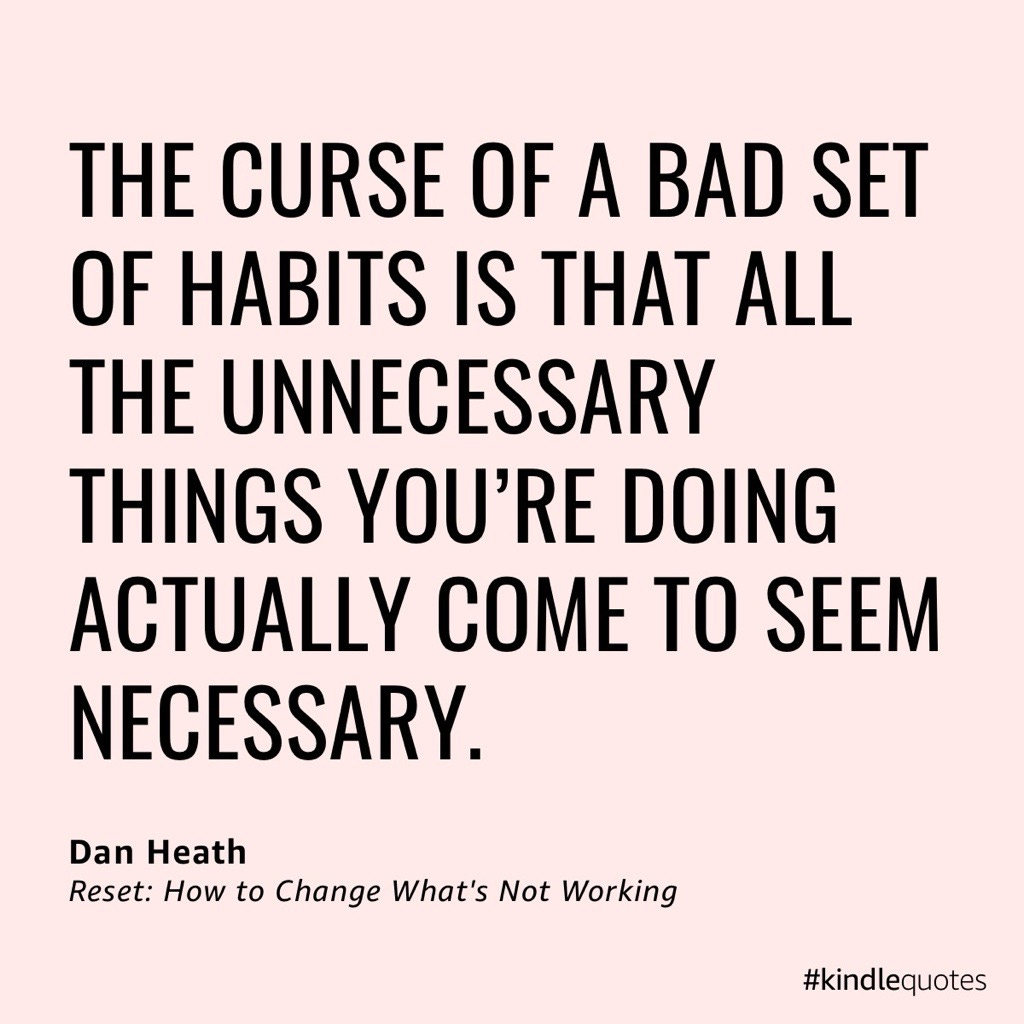Finding the Opportunity in Roadblocks
How obstacles can help us rethink our routines to unlock new paths
Ever since I moved to Central Illinois in the early 90s, I’ve been a skychaser. What the flatlands lack in topography, they make up in skies that go on forever — and often grace us with breathtaking sunsets. Chasing this wonder is one of my favorite things to do at the end of a challenging workday. Open roads. Gravel under the tires of my Jeep. Witnessing the beauty and feeling the peace of the sun slipping over the horizon. It’s truly my happy place.
There’s one place in particular a few miles west of town that I’ve returned to over and over. The gravel is deep and the road rises to reveal expansive skies. I can’t tell you how many spectacular sunsets and storms I’ve captured along this road.
A few weeks ago, I was heading back from some late afternoon errands when I noticed the clouds in the western sky were starting to glow. My happy place was calling and I made a beeline to … a road closed sign blocking me. The sun was setting and I couldn’t get to the place that I knew so well. The place where I knew how the sun angle hits. The place that guaranteed the success of a great shot.
ROAD CLOSED.
I’ll admit I felt deflated. Defeated. The thing I knew how to do so well wasn’t available. I shouldn’t have felt so disappointed. There were countless other roads staring down the same sunset. But none of those options were my tried and true, guaranteed success. I grabbed a few photos — of the sign — and turned back home.
So why am I sharing this story here on THINK.FEEL.LEAD.?
Because it’s an apt analogy for how we often get frustrated when our ways of leading that have always worked for us suddenly stop being effective.
We can be stubborn and insist on our ways — or we can examine how our conditions have changed, get out of our comfort zone, and adapt our leadership accordingly. In these moments, it’s important to be open to feedback, get curious and listen, and work to understand the root cause of the roadblocks. Our leadership approach may not be irreparably broken, but rather needs to evolve to meet changing conditions.
I don’t think the road closed sign I encountered was random. I needed the epiphany in this moment. My team has gone through a great deal of change. We’ve grown by 40% in the last year, gone through a significant reorganization that added layers of management and new leaders from outside the organization, and have had to respond to increasing demands from our clients. It hasn’t been easy or smooth and we’ve been plagued by some intractable bottlenecks that have impacted our productivity and team chemistry and morale.
Though the challenges, I leaned into many of my tried and true leadership techniques — attempting to move our team forward with mission-driven passion, radical transparency, and reality-tinged optimism — and even doubled-down, making sure I increased my intensity and focus.
Not the results we needed.
Just as I needed to find a new route to chase the sunset, I had to admit that I needed to change my approach and actively explore new possibilities.
What does this look like? A few things are starting to move us in the right direction.
Defining clear goals: I’m working to provide real clarity of goals and objectives. I’ve always led with the belief that you hire great people and let them do their jobs, but the complexity of larger organization demands more coordination and structure in what that job entails.
Listening to new voices: I’m listening intently to our new colleagues. They bring a fresh perspective into our team, unbiased from the way things have always been done. Encouraging them to ask why we do things a certain way forces us to articulate our rationale — and often reveals bad habits we didn’t know we had.
Handing over the wheel: I’ve let myself more deeply trust the other leaders in our organization to develop solutions on their own. I don’t need to solve all the problems myself. I’m not the only leader anymore. Each leader has their own approach and ideas, and I have to give them space and patience to lead in their own way.
Soliciting feedback: I’ve asked our leaders for feedback before acting on my instincts so that I get their perspective on challenges and opportunities. This is a huge challenge for me, because my instincts have always served me well.
Letting people solve their own problems: I’ve worked to really listen to voices throughout the organization to identify the obstacles that are holding them back from success — even when the obstacle identified is one I created. Most individual contributors know how to solve their specific problems if given the space, time, and resources to do so.
Demonstrating patience: I’m doing my best to give alternative approaches time to work. We tend to have a lot less patience with unfamiliar solutions if they don’t have immediate benefit. We have to resist the urge to pivot at the first sign of trouble. Sometimes all an idea needs is a little more time to work.
My leadership of our team is infinitely more important than getting the perfect shot of the sunset, so it’s even more important that I don’t get so focused on the tried and true that I put up my own road closed sign along our new paths to success.
What roadblocks are you facing in your leadership? Where might you be relying too much on the familiar, instead of exploring a new path forward?"




